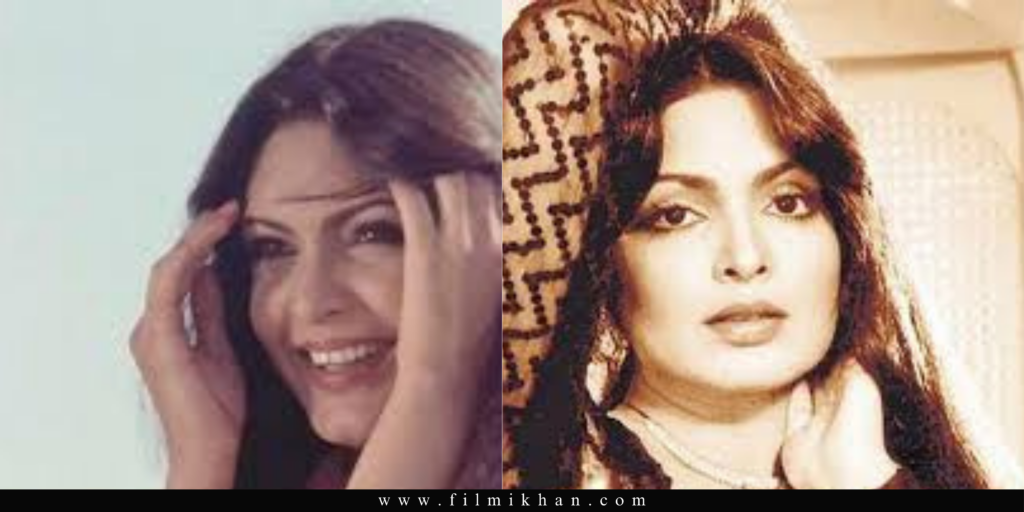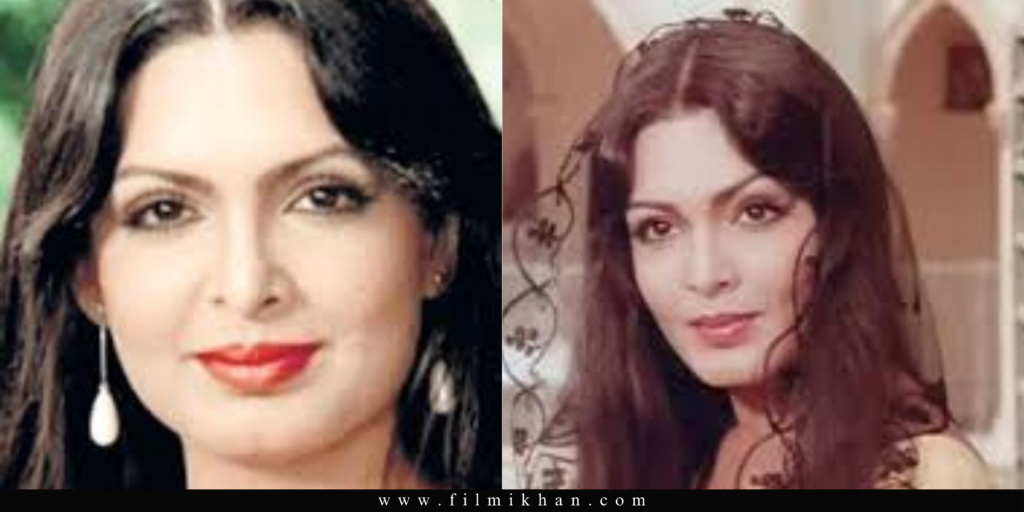
Legendary film actress Parveen Babi who was known for glamorous roles and beauty. She was born on April 4, 1949, in Junagadh, Gujarat, exhibited a passion for the arts from a young age. Her formative years, education, and the early influences that sparked her interest in the world of cinema.
Parveen Babi’s journey in the film industry began with her debut in “Charitra” (1973). She swiftly rose to prominence with her charismatic screen presence and versatility. Her iconic roles in films like Deewar (1975), Amar Akbar Anthony (1977), Suhaag (1979), Kaala Patthar (1979), The Burning Train (1980), Shaan (1980), Kranti (1981), Kaalia (1981) and Namak Halaal (1982) solidified her as one of Bollywood’s leading actresses. She was last seen in 1991 film Irada.

Beyond her Bollywood success, Parveen Babi achieved international recognition in 1976, becoming the first Indian actress to grace the cover of Time magazine. Her influence extended beyond acting, leaving an indelible mark on the fashion and beauty scene.
While Parveen Babi’s professional life flourished, her personal life was marked by high-profile relationships with Kabir Bedi, Danny Denzongpa and Mahesh Bhatt. She was diagnosed with paranoid schizophrenia. The intricacies of her connections with industry contemporaries and the challenges she faced in maintaining a balance between her public persona and private self.
Explore the diverse range of films that showcased Parveen Babi’s acting prowess. From intense dramas to light-hearted comedies, her filmography includes memorable performances in Kala Sona (1975), Chandi Sona (1976), Do Aur Do Panch (1980), Desh Premi (1982), Ashanti (1982), Mahaan (1983), Jaani Dost (1983), Razia Sultan (1983) and Sitamgar (1985) among others.

Parveen Babi faced various controversies, including legal battles and struggles with mental health. An exploration of the challenges she encountered both personally and professionally, shedding light on the tumultuous aspects of her life.
Even after her untimely demise in 2005, Parveen Babi’s legacy lives on. Analyse her enduring impact on Bollywood, her contributions to breaking stereotypes for women in cinema, and how her influence resonates in the industry today.
In retrospect, Parveen Babi remains a symbol of grace, talent, and unapologetic individuality. A heartfelt tribute to the actress who left an indelible mark on Indian cinema, showcasing her timeless beauty and contributions to the world of entertainment.

In this comprehensive biography, we delve into the captivating life of the timeless Bollywood actress, Parveen Babi. From her stellar career in the Indian film industry to the intriguing facets of her personal life, this narrative unfolds the enigmatic journey of a true cinematic icon.
Parveen Babi’s life and career encapsulate the essence of a true cinematic enigma, leaving behind a legacy that continues to inspire and captivate audiences worldwide.
Parveen Babi’s former partner Mahesh Bhatt wrote and directed Arth (1982), a semi-auto-biographical film which tells the story of his relationship with Babi. Noted actress Smita Patil’s role in the film was inspired by Babi. Mahesh Bhatt again wrote and produced Who Lamhe (2006) directed by his nephew Mohit Suri, based on his relation with Parveen. This role was portrayed by Kangna Ranaut.
Writing for Firstpost, Subhash K. Jha noted, “With her good looks, perk, poise, and sex appeal, the sky was the limit for Parveen Babi.” Filmfare noted, “In the 1970s and 1980s, Parveen Babi had a devoted fan base and lit up the screen whenever she showed on it.” India Today wrote, “Parveen Babi with her chiselled looks, well-sculpted body and anglicised accents donned the mantle of archetypal Indian heroine and imparted to the female prima donna of Bollywood her characteristic mannerisms forever.” Latha Srinavasan of The Sunday Guardian termed her “alluring yet outspoken” and said she was “a sensation in the 1970s”.